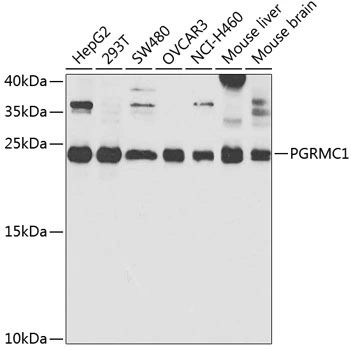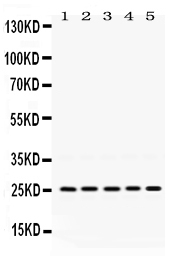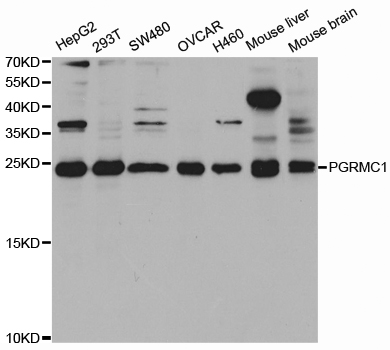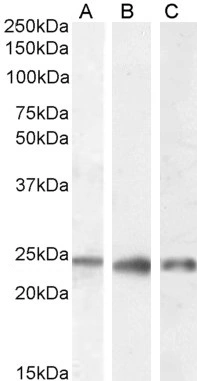PGRMC1 antibody [C2C3], C-term
GTX108532
ApplicationsFlow Cytometry, ImmunoFluorescence, ImmunoPrecipitation, Western Blot, ImmunoCytoChemistry
Product group Antibodies
TargetPGRMC1
Overview
- SupplierGeneTex
- Product NamePGRMC1 antibody [C2C3], C-term
- Delivery Days Customer9
- Application Supplier NoteWB: 1:500-1:3000. *Optimal dilutions/concentrations should be determined by the researcher.Not tested in other applications.
- ApplicationsFlow Cytometry, ImmunoFluorescence, ImmunoPrecipitation, Western Blot, ImmunoCytoChemistry
- CertificationResearch Use Only
- ClonalityPolyclonal
- Concentration1 mg/ml
- ConjugateUnconjugated
- Gene ID10857
- Target namePGRMC1
- Target descriptionprogesterone receptor membrane component 1
- Target synonymsDap1, HPR6.6, IZA, MPR, membrane-associated progesterone receptor component 1, progesterone binding protein
- HostRabbit
- IsotypeIgG
- Protein IDO00264
- Protein NameMembrane-associated progesterone receptor component 1
- Scientific DescriptionProgesterone binding protein is a putative steroid membrane receptor. The protein is expressed predominantly in the liver and kidney. [provided by RefSeq]
- Storage Instruction-20°C or -80°C,2°C to 8°C
- UNSPSC12352203
References
- Huang HY, Chou HC, Law CH, et al. Progesterone receptor membrane component 1 is involved in oral cancer cell metastasis. J Cell Mol Med. 2020,24(17):9737-9751. doi: 10.1111/jcmm.15535Read this paper
- Kim JY, Kim SY, Choi HS, et al. Progesterone Receptor Membrane Component 1 suppresses the p53 and Wnt/β-catenin pathways to promote human pluripotent stem cell self-renewal. Sci Rep. 2018,8(1):3048. doi: 10.1038/s41598-018-21322-zRead this paper
- Lin ST, May EW, Chang JF, et al. PGRMC1 contributes to doxorubicin-induced chemoresistance in MES-SA uterine sarcoma. Cell Mol Life Sci. 2015,72(12):2395-409. doi: 10.1007/s00018-014-1831-9Read this paper
- May EW, Lin ST, Lin CC, et al. Identification of up- and down-regulated proteins in doxorubicin-resistant uterine cancer cells: reticulocalbin-1 plays a key role in the development of doxorubicin-associated resistance. Pharmacol Res. 2014,90:1-17. doi: 10.1016/j.phrs.2014.08.007Read this paper
- Chen JY, Chou HC, Chen YH, et al. High glucose-induced proteome alterations in hepatocytes and its possible relevance to diabetic liver disease. J Nutr Biochem. 2013,24(11):1889-910. doi: 10.1016/j.jnutbio.2013.05.006Read this paper
- Li JM, Chou HC, Wang SH, et al. Hyaluronic acid-dependent protection against UVB-damaged human corneal cells. Environ Mol Mutagen. 2013,54(6):429-49. doi: 10.1002/em.21794Read this paper
- Lin ST, Chou HC, Chang SJ, et al. Proteomic analysis of proteins responsible for the development of doxorubicin resistance in human uterine cancer cells. J Proteomics. 2012,75(18):5822-47. doi: 10.1016/j.jprot.2012.07.047Read this paper






